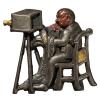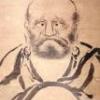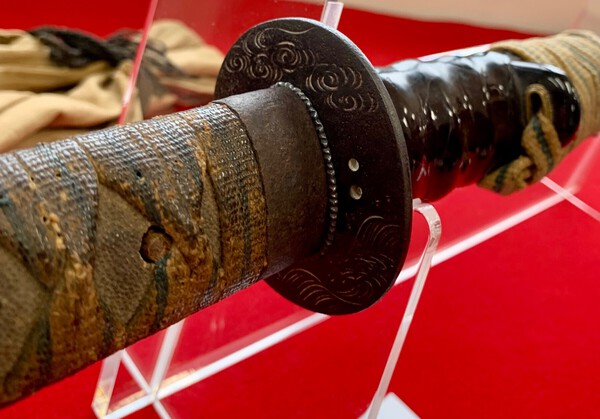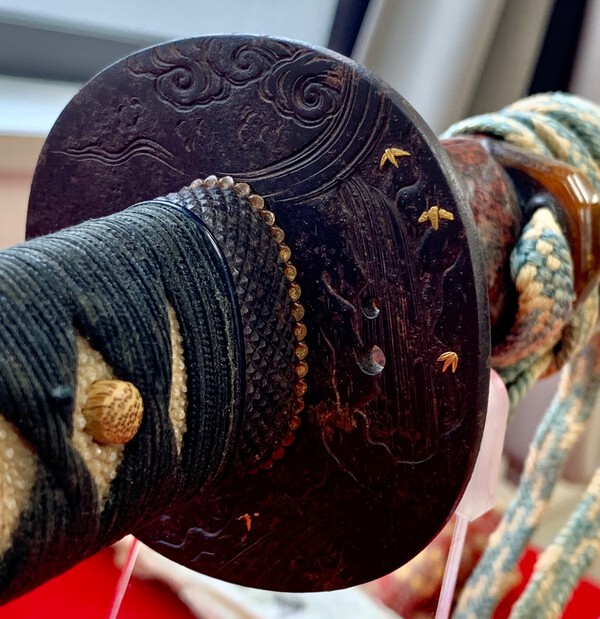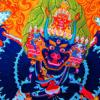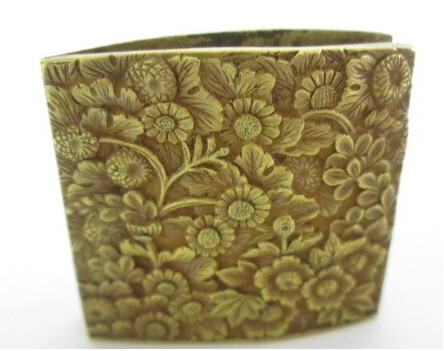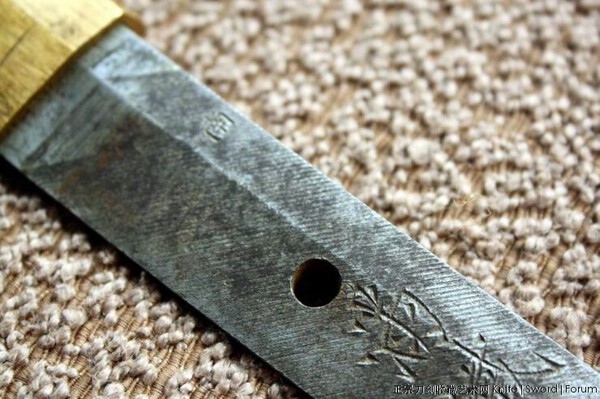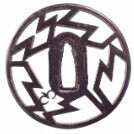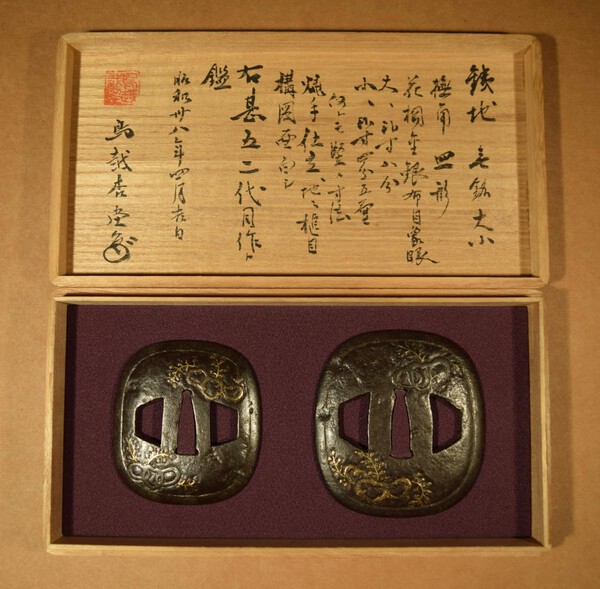Leaderboard
Popular Content
Showing content with the highest reputation on 01/23/2022 in all areas
-
Dear fellow NMB members, the JAS is happy to announce the opening of the new "Samurai Art Museum" in Berlin for the 8th of May in the year of the tiger! Depending on the pandemic situation, our society is about to organize a meeting in the realm of this event, probably in the time frame from May the 6th to 8th. Don't miss this unique opportunity!6 points
-
石州長濱住正直作 Sekishū Nagahama-jū Masanao saku Made by Masanao of Nagahama in Ishikawa.6 points
-
The British Museum has around 400 blades, of which only a handful are usually on display. I hope the great ex-Compton Shintogo Kunimitsu tanto is still on display. It has very elegant Goto Ichijo koshirae. My personal favourite is the ex-Compton Ko-Bizen Yoshikane but there are some other great ubu Ko-Aoe (eg a Sueyuki), Ichimonji, some nice Soden, etc. With the To-Ken Society we have organised various study days at the BM in the past where we studied hands-on swords from the collection which are not on display. Normally only one armour is on display. The V&A must have over a 100 swords (just a guess) and some of them rather special. Again, on display you will have around 10. There are usually 3-5 armours on display. We have done study days there too and they also have great tosogu. The Tower of London has a handful of items in there but the vast majority of Japanese items were moved to the Leeds Armouries. Can’t remember about armours as have not been there for 15 years. in the South Easy you also have the Chiddingstone Castle museum which holds some decent swords and armours too.6 points
-
Dan, FWIW, that's Jim Gilbert's blog. As he notes, there's a whole class of cast tsuba that are generally thought to be pretty old - just google kagamishi tsuba (鏡師 鍔) to find more to study. A lot of them have the coarse figures on them as shown, but... some of them can be pretty well done - here's an old one that you have to look at a little before you realize it was cast: Best, rkg (Richard George)4 points
-
Thanks Uwe, I am only getting more and more confused by the Japanese terminology and the wonderful rabbit hole that we call armour collecting! And trying to find out some more with google translation. In the box I also found an old catalogue from a Japanese museum where it had been displayed. Maybe it helps3 points
-
Hi Seve, the leather is called "Shôhei gawa" and the date printed on it, is the date of its first introduction in 1352, if I remember well. Hence no connection to the piece..3 points
-
Hi Paz, Some options for visits a little nearer home for you. I think in all of these cases I would make enquiries to check what is actually on display before making a special journey. These are listed in A Guide to Japanese Art Collections in the UK: Scotland The Royal Museums of Scotland in Edinburgh have a couple of swords and some sword fittings on display (though apparently lots more not on display). There's a collection of tsuba at the McClean museum and art gallery in Greenock (apparently some swords and armour too but they don't feature on the web site). North of England Manchester - the Manchester Museum has a large collection of Japanese items including swords and fittings but is closed until later this year. The Manchester Art Gallery also has swords, tsuba (with many flavours of rust) and armour. National museums Liverpool has a good collection of Japanese items including some good swords, sword fittings and 13 suits of armour. The Oriental Museum at Durham University also has some swords and fittings on display. The Royal Armouries Museum, Leeds (this is excellent for the Japanese items and well worth a visit generally). I hope that helps a little.3 points
-
3 points
-
Today at the Osafuné NBTHK joint meeting with Hyōgo and Okayama, some Satsuma Koshiraé were produced on a side table. The owner was explaining some of the typical features, such as small Tsuba with small holes at the side, 元結の孔 “motoyui no ana”. The same word motoyui used for tying the top knot of a Sumo wrestler. He explained that the twist of paper holding the Tsuba to the kurikata actually contained a wire, i.e. that the wire was covered by the paper Koyori twist. I took some photos of these very businesslike sword scabbards, which I will post in the morning, but in the meantime, to stay on topic…3 points
-
Hello all, This is my first post here and I hope it is in the right section, so please be gentle with me. I am collecting WW2 medals and ancient coins for 30 years but the last few years I bought some Japanese antiques, just because I like old Japanese items. I also have a katana, yari, kake, musha ningyo and a wakizashi. I don't want to start a new collection so I only want to collect one of each. My interest is mainly the history behind it not really rare makers or variants. Here I post my Kabuto, The seller said that the family he got it from stated that it has been worn during the fall of Odaware Castle. So if this is true ,that would mean that it must have been made before 1590. I searched online for the "mon" and found nothing and got lost, so I would appreciate your help. My question is about the "mon" and the period of making. Any other comments are also appreciated. Best Regards, Lucky2 points
-
Hello and welcome Lucky! I love the first sentence of Johns post...!!! Nice helmet and a nice gusoku over and above that! Yes, the kabuto might have some age, but more on that later. The mon on the fukigaeshi could be described as "Maru ni de hitotsu biki" ("丸に出一つ引き", or literally, protruding bar in a ring ) I guess!? I found only a few references, "鮒子田" (Fushita), "田畑" (Tabata) and "大山" (Oyama). Unfortunately, thats only half of the truth. On the one hand we have no chronological assignment, on the other hand we still have these two choji on the maedate. Furthermore and unfortunately, Simon is not totally wrong.....there is a possibillity, that these are later additions. So a lot of study and work left to do... Note: Some of the names could have several readings!2 points
-
The mon is called maru ni de hitotsu hiki (丸に出一つ引き)which, as you can imagine, means "one line protruding from circle". I have no information regarding who may have used this mon. Here is a link for your further research. https://irohakamon.com/kamon/hikiryou/marunidehitotsuhiki.html Regarding the date, the writing in your second picture is a date. It may not be the date of the manufacture of th helmet, but it will be a data point. The first part is the era name, but it is covered by the mon. The part we can read says "June 1st". The era name might be Shōhō 正保 (1645-1648). Could also be Shōchō 正長 (1428-1429) but I think that's unlikely.2 points
-
2 points
-
I think this 大 mark is Izumo Taisha (Izumo Grand Shrine/出雲大社) 。Hence:Slough's book, page 82: Tai stamp appears on late war blades made by smiths associated with the Izumo Seiko steel works. Located in Shimane. The forge was located near the Izumo Taisha shrine and by 1945 the country was in dire need of divine assistance. @Bruce Pennington@Kiipu2 points
-
2 points
-
2 points
-
I am not an armor guy but I believe in the brackets after the description of the armor it says (大和高田 吉川家伝来) Yamato Takada, Kikkawa family denrai. So it would have been owned historically by Kikkawa family. Here is link to wikipedia entry for Kikkawa clan: https://en.wikipedia.org/wiki/Kikkawa_clan I think the description of your armor would be - 紺糸胸取五枚胴具足 I believe the exhibition was - つわものの美 大和の甲冑武具展 - Exhibtion of Yamato Armor1 point
-
Welcome Victor, I would place the manufacture date of your Sword at mid 1942, most likely in July. Thanks for sharing your sword with us here.1 point
-
Hi Lucky, Welcome to the wonderful rabbit hole that we call armour collecting! Nice kabuto! It seems that the ukebari (the cloth liner) is detached near the front of the kabuto. If so, are you able to peel it back and take a picture of the interior construction? That would help with an approximate dating of your kabuto. I will leave it to other members like Uwe or Piers to comment on the mon. John1 point
-
1 point
-
1 point
-
1 point
-
Thomas Unfortunately, I do not have other photos,I would already post them if I have more. But for the 2 photos I have,lt looks like eBay seller ericowazamono's old sell,he might still have photos of that sword in his data.Our member @Ontario_Archaeology just bought a 1938 Mantetsu N356 from him not long ago.1 point
-
DANG! Stuff like this blows my mind. The craftsman must have a vision in their head, like Michelangelo said "I see what's there and remove everything else."1 point
-
Bruce As I said, these are all the photos I've been provided. I asked already, no other photos, not my friend's swords, he just found photos for me from some old file he saved a long time ago.1 point
-
Yoshikiyo (for future smith name searches! @BANGBANGSAN I've also noted this Tai stamp in the Stamps of the Japanese Sword doc. I have 4 smiths listed now: Okimitsu, Masakiyo, Masayoshi, and Yoshikiyo. I don't know my source for the 2 "Masa" smiths, but the 2 plus the Yoshikiyo looks like a mashup of names. Wondering now about the 2 Masa names.1 point
-
That's an interesting question, Thomas. Ohmura stated that SMR was making 400 blades per month in those first years, although there was a discussion of the engineering team figuring out some improvements at the first that enabled them to increase production. So, I don't know if he meant that they were making less than 400/mo at first, then the improvements ramped up production to 400/mo. If it was 400/mo across the board, there were 12 months, so 12 letters would be A - L. Yet we now have N's and M. So I suspect their initial production was something less than 400/mo. accounting for the letters running past "L". We have numbers in the N line into the 400's. Possibly that was the first line that the engineering improvements pushed production into that number. But like you say, our sample is so incredibly small that we will never know if we don't get more samples. Here's a new one @Ontario_Archaeology tipped me off to. It's a 1942 "MA マ77", which now makes the 1943 "Ma" line an overlap. Checking all the other years, they all overlap, except '41/'42, but we probably simply don't have an example yet. I bet they all overlapped.1 point
-
That is a first for the letter M. It looks like Mantetsu was only using two (2) digits in the beginning? Starting with the N-series, they went to three (3) digits? This could indicate that other letters such as A, B, D, E, ... , could be encountered in the future. C17 to C30 H14 M61 N1 to N408 @BANGBANGSAN, are there any other pictures of M61 available? Sorry Bruce, I just had to ask first!1 point
-
John and Uwe, Thank you. Got these all on a tight budget and while I know they are lower end pieces but I like their grit. I just bought some nylon to attach the sode correctly and I also got some foam blocks and will use both the nylon and blocks to support the armor as best as possible. I will attach some pics with the results once completed. Hopefully it will be better set up for it's conservation whike displayed and look a bit more appropriate afterwards. Also, just for my own knowledge what are the potential aspects of this Dou that point to possibly being Momoyama? Never had anyone share what thier eyes see with it. As a bit of a side note, any solutions of home product mixtures that are best suggested for cleanings of the urushii portions or even the exposed metal parts? Wouldn't mind taking a bundle of qtips and cleaning each part if I can find the responsible way to do it to remove the collected dust. There's probably 30 year old plus dust on it. Also there's a couple parts of the lacquer that have come off that I have been able to place back but they aren't adhered...is there any recommended way to re-adhere them? Or like nihonto is it just best to leave them be? I did have a glue recommended to me once but it was so long ago I can't remember it and where opinions fell on whether or not to attempt such things.1 point
-
1 point
-
1 point
-
Thanks Brian , No I don't believe that there is any such requirement. My understanding is that if I took the piece to Japan I would continue to own it but would not be able to take it back out of the country unless I had received permission to do so before I took it in . When these missing pieces have turned up in the past there has been no push by the Japanese government for them to be returned so I don't think it is an issue The Treaty of San Francisco which was signed by Japan and the US in 1951 contains provisions recognizing the validity of dispositions of property made pursuant to directions of the US Military government . As the swords were handed in on the directions of the occupying forces this treaty , I think , validates our possession of swords handed in during the occupation. Article 19(d) of the treaty also recognizes the validity of all acts and omissions done during the occupation under or in consequence of directives of the occupation authorities ( ie the SCAPIN's requiring the swords to be handed in ) and waives Japans right to take action for those acts or omissions. Ian Brooks1 point
-
In Germany, 10117 Berlin(Mitte), Auguststraße 68 on May 8, 2022: https://samuraimuseum.de/1 point
-
David its actually a Gardener's tool cut bonsai an such. No true kisskai.1 point
-
Hi treasure hunters, Thanks again to everybody who joined, I have uploaded several pictures on facebook as here it would overrun the file size limit. https://fb.me/e/2ex17pWCK Overall I was positively surprised how open all the dealers were regarding me taking pictures of the items. I also made one new friend it seems, the guy who had the blades, as he was very kind explaining what he knew. Also shared his lunch with me even though I tried to insist not to. Looking forward to our next hunt together! Cheers Paul 20211205_002953744_iOS.heic1 point
-
Hello Paul, It’s a shame that you have just joined the forum. I was attending antique fairs in Tokyo for the past two years (at least two fairs a week), but recently moved to Kyushu (where there are a lot more swords at temple markets). I always found Tomioka to be a bit hit and miss. The tosogu was mostly lower end and over priced (when I was last there), but there was one good dealer (who is always at the Yurakucho International Forum fair), who has some good quality items.1 point
-
Hi Paul, this is really a great idea! I would love to walk through a Japanese flea market again. The last time I went to the Kawagoe Antique Market was in April 2019 and I actually found a nice tsuba quite cheap. Good luck and most of all have fun on Sunday! Maybe you post some photos for all who can't be there "live". With a few nice photos of the flea market, you can dream of Japan again at home...1 point
-
1 point
-
I have to ask; is the armour on your side of the bed or your partner's?0 points
This leaderboard is set to Johannesburg/GMT+02:00






